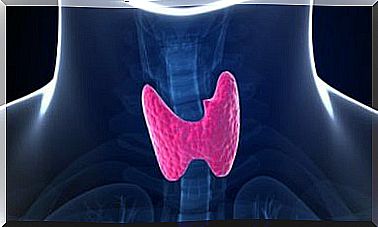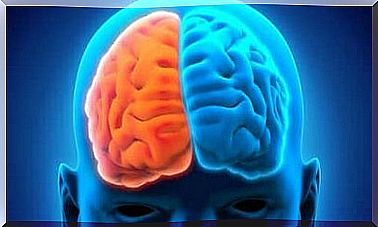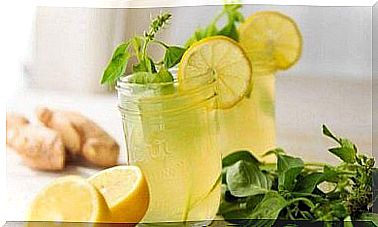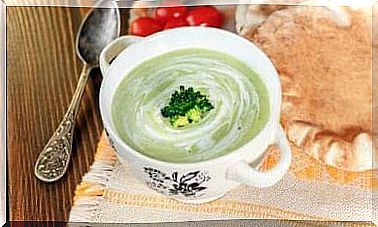Include These Iodine Foods In Your Diet

Iodine is an essential mineral required for the synthesis of thyroid hormones. Fluctuations in iodine levels can cause hyperthyroidism or insufficiency, which can lead to disturbances in basal metabolism. Do you know what iodine foods you should include in your diet?
Although people do not need a lot of iodine a day, the daily need during pregnancy and breastfeeding doubles and its lack can have serious consequences for the baby.
Fortunately, however, there are many iodine-rich foods. In this article, we’ll talk about the top seven iodine foods you should include in your diet.
Why is it important to eat iodine-rich foods?

This mineral is essential for the proper functioning of thyroid hormones, which play a vital role in regulating metabolism.
It is important to note that iodine is an essential substance for hormone development and its deficiency during pregnancy can affect a baby’s development. In addition, problems such as goiter, or enlargement of the thyroid gland, can be caused by, among other things, iodine deficiency.
Recommended use of iodine
The best way to get the required amount of important vitamins and trace elements on a daily basis is to follow a balanced diet that includes a variety of foods. Here are some recommendations for iodine intake:
Babies:
- 0-6 months: 100 mcg per day
- 7-12 months: 130 mcg per day
Children:
- 1-8 years old: 90 mcg per day
- 9-13 years old: 120 mcg per day
Young people and adults:
- Men over 14 years of age: 150 mcg per day
- Women over 14 years of age: 150 mcg per day
- Pregnant women: 220 mcg per day
- Lactating women: 290 mcg per day
Certain recommendations depend on age, gender, and other factors such as pregnancy. Ask your doctor how much you should eat based on your needs.
Seven iodine foods
1. Iodine-containing salt
Although it is not exactly food, salt is the most iodine spice as it contains 1900 mcg / 100 g. Despite the fact that salt is high in iodine, people tend to use iodine-containing salt in very small amounts. Although it tastes exactly like regular salt, it has more health effects.
All you have to do is replace regular table salt with iodine-containing salt and use it to season foods (reasonably, of course).
2. Seaweed
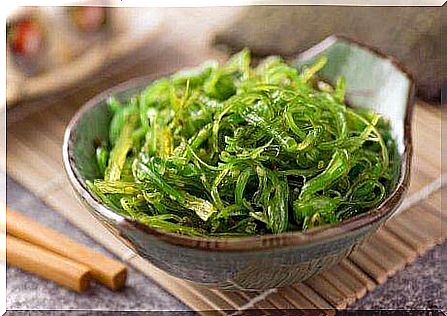
The sea is the main source of iodine, so seaweed contains a lot of iodine.
There are many iodine-containing seaweeds in the ocean, such as kelp, arama, hijiki, wakame and kombu. Kelp, for example, contains four times the daily recommended amount of iodine and 1 tablespoon of arama contains 730 mcg of iodine.
You can use them to make soups, sushi, snacks or salads.
However, you need to be careful. This is because thyroid problems can also be caused by excessive iodine intake.
3. Blueberries
This berry, rich in antioxidants, is also an inexhaustible source of iodine. 11 g of blueberries contains 400 mcg of iodine. Blueberries are also low in calories due to their low carbohydrate content. In addition, blueberries are full of vitamin C and fiber, and they improve intestinal circulation and contain potassium, iron, and calcium.
However, blueberries are characterized by the fact that they are full of natural antioxidants. Red berries, on the other hand, are great allies in the fight against recurrent urethritis and strengthen the body’s diuretic ability.
4. Fresh fish
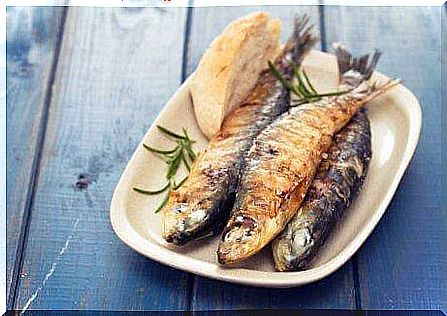
In addition to seaweed, other seafood, such as fish and shellfish, also contain a lot of iodine.
Cod stands out from the crowd as the most iodine-rich fish with 170 mcg / 100g of iodine. In addition, it is full of vitamins B1, B2, B6 and B9, which get the body to make the best use of carbohydrates, fats and proteins.
150 g of mackerel contains only 208 calories and 225 mcg of iodine. Just like other Bluefish, it is full of Omega-3 fatty acids, which means it helps lower blood cholesterol as well as triglyceride levels, helping to keep the heart healthy.
Tuna is one of the most commonly eaten bluefin fish. It is iodine-containing because it contains 50 mcg / 100 g. This is followed by sardines and hake, which contain slightly less iodine or about 30 mcg / 100 g.
5. Shells
This mollusk is considered the Pearl of the food world because it is low in calories but contains a lot of nutritional properties such as vitamins, amino acids and minerals.
It is also rich in iodine, as 100 g of mussels contain about 130 mcg of iodine.
6. Chicken

Chicken is one of the most iodine-rich meats and has 7 mcg / 100 g.
7. Shrimp
Seafood and Seafood are good sources of iodine and full of protein and vitamins. One of the best options is shrimp, as they contain 35 mcg of iodine per less than 100 g.
These are just a few examples of iodine-rich foods that you can easily include in your diet. However, always remember not to exceed the recommended daily amount of iodine.


